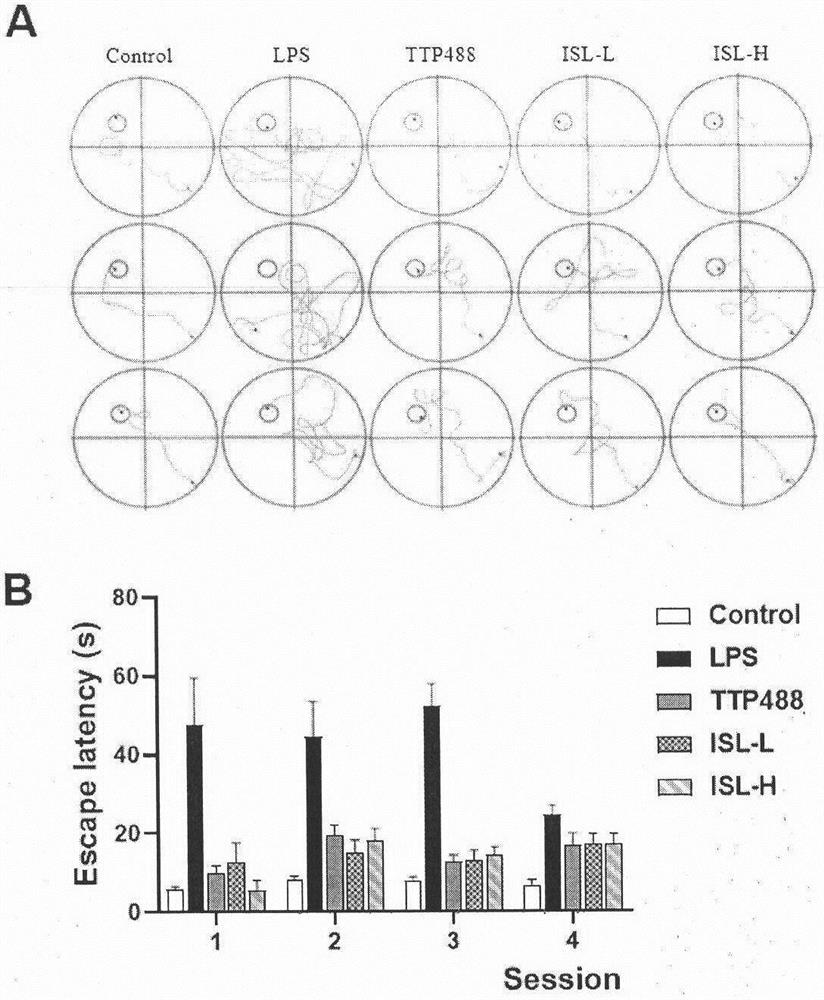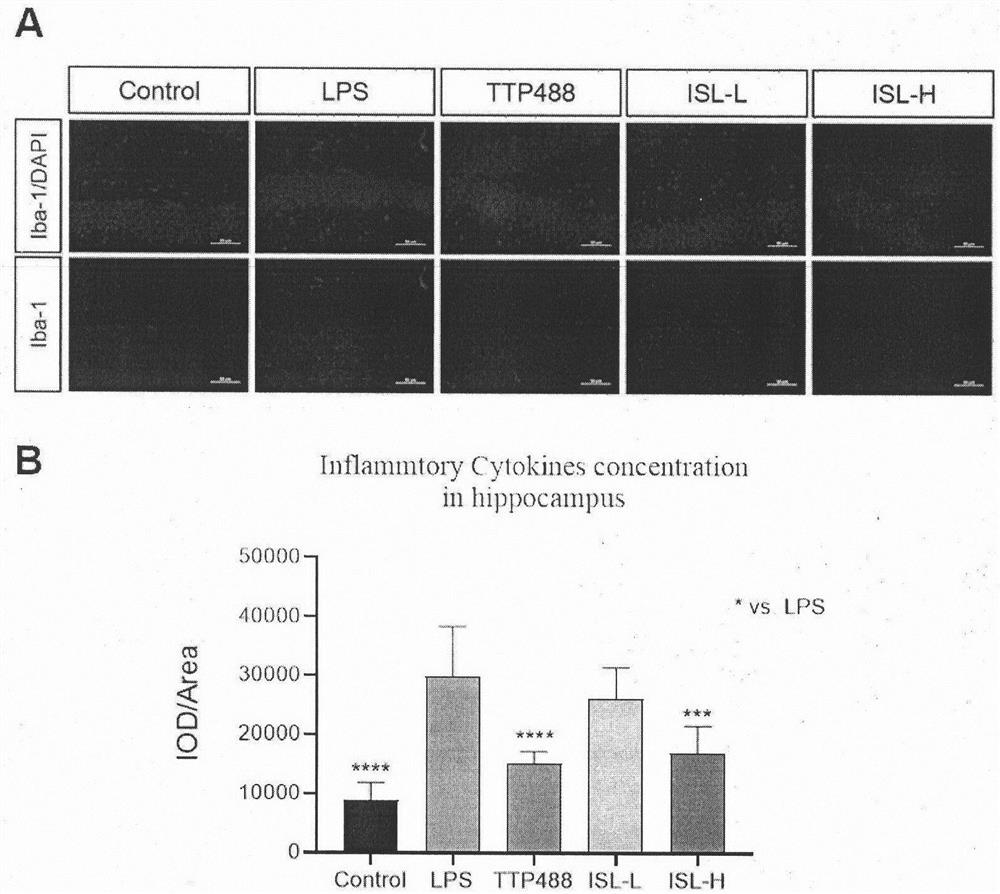Application of isoliquiritigenin in preparation of anti-neuroinflammation drugs
A neuroinflammation and isoliquiritigenin technology, applied in the field of medicine, can solve problems such as side effects and rarely effective reversal of the disease
- Summary
- Abstract
- Description
- Claims
- Application Information
AI Technical Summary
Problems solved by technology
Method used
Image
Examples
Embodiment 1
[0026] Example 1 Water maze test to test the effect of isoliquiritigenin on the improvement of LPS-induced neuroinflammation and memory impairment in mice
[0027] In this embodiment, the experimental animals were randomly divided into 5 groups, namely: normal control group (Control), LPS group (LPS, 250 μg / kg / d), positive drug group (LPS+positive drug, TTP488, 5 mg / kg / day) , low-dose isoliquiritigenin group (LPS+low-dose isoliquiritigenin, ISL-L, 25mg / kg / day) and high-dose isoliquiritigenin group (LPS+high-dose isoliquiritigenin, ISL-H, 50mg / kg / day) , 7 in each group. In the first week, each experimental group was administered according to the concentration, and then injected with LPS. In the second week, each experimental group was dosed according to the concentration every day. After 2 weeks, the memory function of the mice was investigated using the water maze experiment. The experimental data were expressed as Mean ± SD. All experimental data were statistically analyzed...
Embodiment 2
[0029] Example 2 The effect of isoliquiritigenin on the inflammatory response in the brain tissue of mice with neuroinflammation induced by LPS
[0030] The experimental grouping and dosing scheme of this example are the same as in Example 1. After the administration, the mice were sacrificed, and the complete brain tissue was taken out to make paraffin sections, and immunofluorescence was performed on the sections. For the results, please refer to image 3, and then immunofluorescent staining was used to measure the expression of the inflammatory factor Iba-1 in the hippocampus. The experimental data were expressed as Mean±SD. All the experimental data were statistically analyzed using GraphPad Prism 8 software. The parameters between groups of mice in each group were expressed by ANOVA test, P <0.05 was considered to be statistically different.
[0031] The main steps of making paraffin sections include cleaning the tissue and fixing it in 4% paraformaldehyde for 1 week → ri...
Embodiment 3
[0035] Example 3 Transcriptome sequencing (RNA-seq) analysis of gene expression differences before and after isoliquiritigenin treatment of LPS-induced neuroinflammation in mice
[0036] Total RNA was extracted before and after isoliquiritigenin treatment of LPS-induced neuroinflammation in mice according to the instructions, and the qualified total RNA samples (including biological replicates) were sent to BGI for transcriptome sequencing (RNA-seq) analysis. After preprocessing the raw sequencing data, the effective transcriptome data of each sample before and after isoliquiritigenin treatment of LPS-induced neuroinflammation in mice was obtained.
[0037] Figure 4 It is a graph of sequencing results of mouse brain tissue transcriptome in Example 3, wherein (A) is a Venn diagram of gene expression between groups of Control group, LPS group, and ISL group, and RNA-seq data analysis shows that Control group, LPS group, ISL group The number of co-expressed genes was 21497, the...
PUM
 Login to View More
Login to View More Abstract
Description
Claims
Application Information
 Login to View More
Login to View More - R&D
- Intellectual Property
- Life Sciences
- Materials
- Tech Scout
- Unparalleled Data Quality
- Higher Quality Content
- 60% Fewer Hallucinations
Browse by: Latest US Patents, China's latest patents, Technical Efficacy Thesaurus, Application Domain, Technology Topic, Popular Technical Reports.
© 2025 PatSnap. All rights reserved.Legal|Privacy policy|Modern Slavery Act Transparency Statement|Sitemap|About US| Contact US: help@patsnap.com



